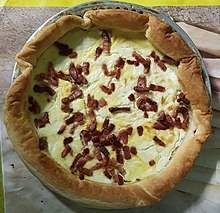Worship and other Services - Test Items
St Mary the Virgin Rota for Sunday and Thursday Services - from May 2024
Our services at Riverhead typically follow the pattern of ...
8am Holy Communion every Sunday.
9:30am 1st Sunday of the month - All Age Family Service; 2nd, 4th, 5th Sundays - Holy Communion; 3rd Sunday - Morning Prayer/Baptisms.
| 8am communion - Minister | 9.30 Service | 9.30 Minister | |
| 11-Aug | Steve Osei-Mensah | Communion | Steve Osei-Mensah |
| 18-Aug | Richard Arding | Morning Prayer | Daphne Harrison |
| 25-Aug | Steve Osei-Mensah | Communion | Steve Osei-Mensah |
| 01-Sep | Steve Osei-Mensah | All-Age | Steve Osei-Mensah |
| 08-Sep | Richard Arding | Communion | Richard Arding |
| 15-Sep | Richard Howlett | Morning Prayer | Daphne Harrison |
| 22-Sep | TBA | Communion | TBA |
| 29-Sep | Richard Arding | Communion | TBA |
If you wondered what heppened in previous weeks ... read on for a summary of each weeks service in a few words ...
Service 2024-08-25
What happened today was all about <subject> and the sermon was delivered by <someone> which was especially appropriate because the readings today were all about <something>. We can also add pictures or other items about this event
We can add as much or as little as we want here but to save some typing I will paste some meaningless articles in to expand the page. Can also of course add links, videos, pictures ...
Marmite (/ˈmɑːrmaɪt/ MAR-myte) is a British savoury food spread based on yeast extract, invented by the German scientist Justus von Liebig. It is made from by-products of beer brewing (lees) and is produced by the British company Unilever. Marmite is a vegan source of B vitamins, including supplemental vitamin B12. A traditional method of use is to spread it very thinly on buttered toast.
Service 2024-08-18
What happened today was all about quiche which we all know is dear to Daphne and Trevors heart
Quiche (/ˈkiːʃ/ KEESH) is a French tart consisting of a pastry crust filled with savoury custard and pieces of cheese, meat, seafood or vegetables. A well-known variant is quiche lorraine, which includes lardons or bacon. Quiche may be served hot, warm or cold.
Overview
[edit]Etymology
[edit]The word is first attested in French in 1805, and in 1605 in Lorrain patois. The first English usage — "quiche lorraine" — was recorded in 1925. The further etymology is uncertain, but it may be related to the German Kuchen meaning "cake" or "tart".[1]
History
[edit]Quiche is a French dish originating from the eastern part of the country. It may derive from an older preparation called féouse[2] typical in the city of Nancy in the 16th century. The early versions of quiche were made of bread dough but today shortcrust and puff pastry are used.[3] In 1586, They were served at a dinner for Charles III, Duke of Lorraine.[4] Before that, recipes for eggs and cream baked in pastry containing meat, fish and fruit are referred to as Crustardes of flesh and Crustade in the 14th-century The Forme of Cury.[5] Since the Middle Ages, there have been local preparations in Central Europe, from the east of France to Austria, that resemble quiche.[6]
The American writer and cookery teacher James Peterson recorded first encountering quiche in the late 1960s and being "convinced it was the most sophisticated and delicious thing [he had] ever tasted". He wrote that, by the 1980s, American quiches had begun to include ingredients he found "bizarre and unpleasant", such as broccoli,[n 1] and that he regarded Bruce Feirstein's satirical book Real Men Don't Eat Quiche (1982) as the "final humiliation" of the dish, such that "[a] rugged and honest country dish had become a symbol of effete snobbery".[7]
Service 2024-08-11
What happened today was all about Marmite which we all know is dear to Daphne and Trevor's heart and especially important to Simon
Roquefort (French pronunciation: [ʁɔkfɔʁ]) is a sheep milk blue cheese from southern France.[2] Though similar cheeses are produced elsewhere, EU law dictates that only those cheeses aged in the natural Combalou caves of Roquefort-sur-Soulzon may bear the name Roquefort, as it is a recognised geographical indication, and has a protected designation of origin.
The cheese is white, tangy, creamy and slightly moist, with veins of blue mold. It has a characteristic fragrance and flavor with a taste of butyric acid; the blue veins provide a sharp tang. It has no rind; the exterior is edible and slightly salty. A typical wheel of Roquefort weighs between 2.5 and 3 kg (6 and 7 lb), and is about 10 cm (4 in) thick. Each kilogram of finished cheese requires about 4.5 liters of milk to produce. In France, Roquefort is often called the "King of Cheeses" or the "Cheese of Kings", although those names are also used for other cheeses.[3]
Service 2024-08-04
Steve gave a sermon today on the subject of cheese and how well it goes in sandwiches
And this is very short to show that thats possible also



